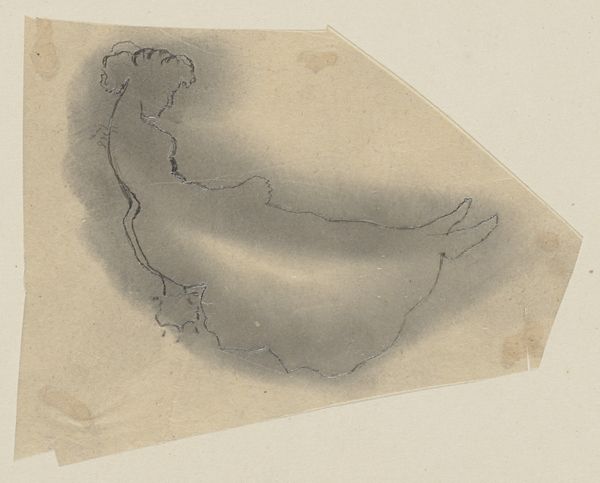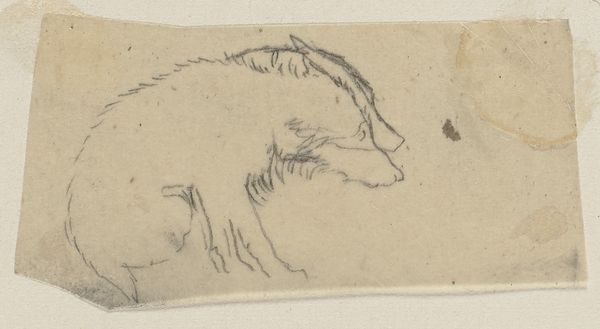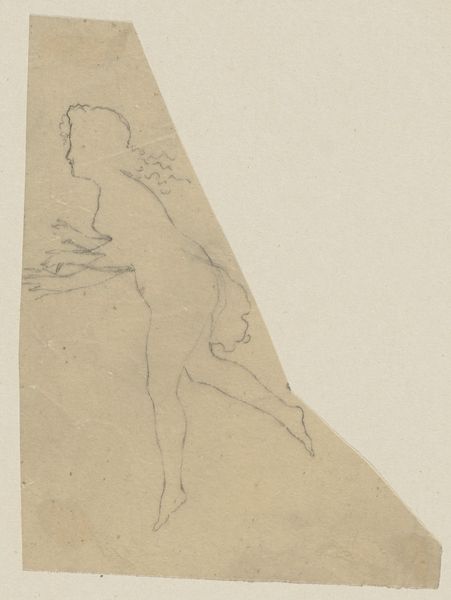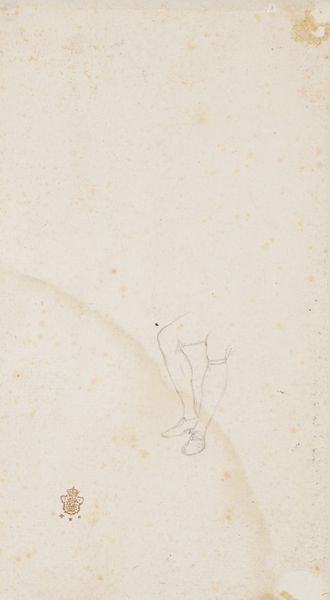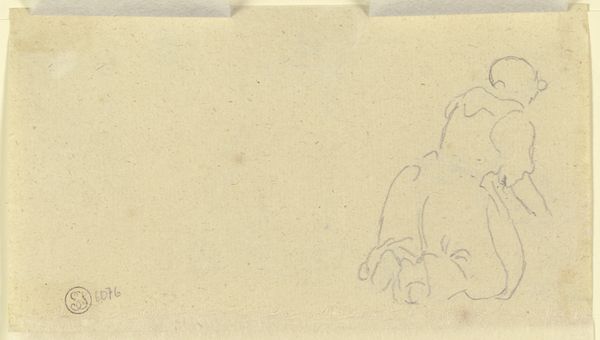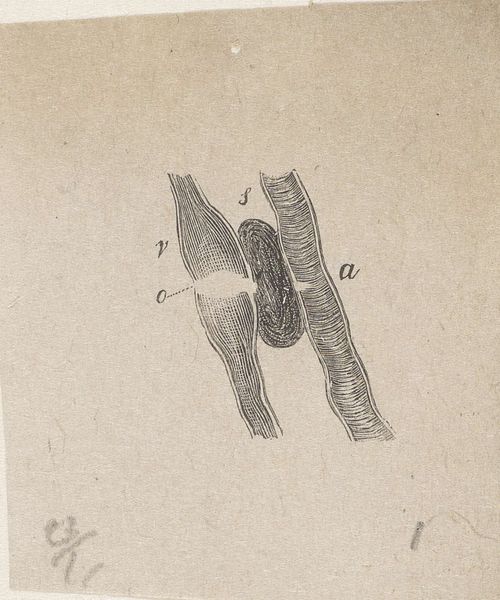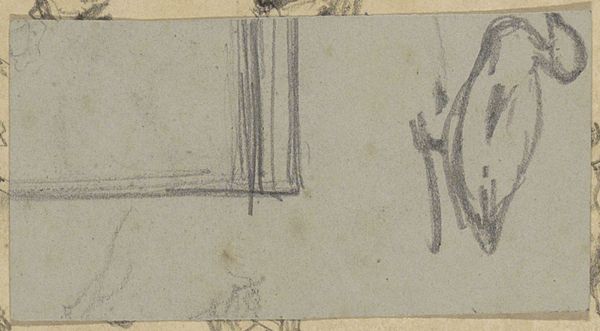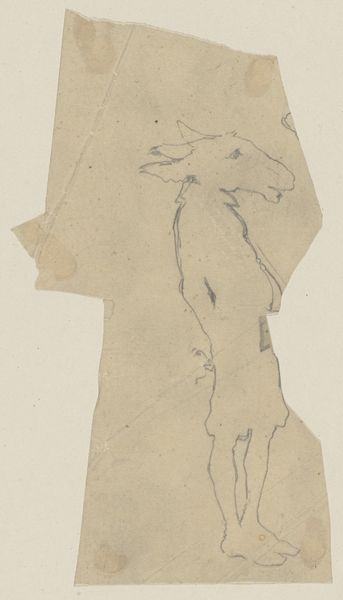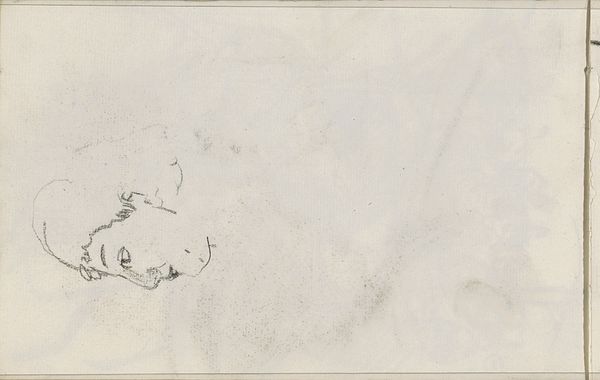
Der Hund des Mondes, sitzend und mit hängendem Kopf, nach links c. 1867 - 1868
0:00
0:00
Copyright: Public Domain
Curator: At first glance, there’s a distinct sense of melancholy emanating from this piece. It’s quite minimalist; a single animal rendered with delicate lines. Editor: Yes, "Der Hund des Mondes, sitzend und mit hängendem Kopf, nach links," or "The Dog of the Moon, Sitting and with Head Hanging, to the Left"—a pencil drawing by Paul Konewka dating back to around 1867-1868. It resides here with us at the Städel Museum. It captures the quietude of Romanticism with an endearing figure. Curator: "Dog of the Moon" feels very telling. The moon has forever been linked to emotional cycles, heightened sensitivity, and this drawing reflects a palpable moodiness through the dog’s slumped posture and the sketchy lines that imply impermanence or perhaps introspection. Editor: That melancholic tone aligns well with the historical backdrop. Konewka's works often echoed the sentiments of his time—the anxieties, uncertainties, and the growing alienation felt by individuals amidst rapid social and political change following the Industrial Revolution. There's also an appealing interplay here, placing an emblem of domestic comfort within a more celestial, perhaps unknowable sphere. Curator: Absolutely, the "domestic comfort" clashes intriguingly with the vastness suggested by “the Moon." Dogs historically carry strong symbolic weight—loyalty, protection—but juxtaposed against lunar symbolism, that loyalty perhaps becomes tinged with solitude or longing. I find myself wondering if the dog symbolizes a desire for connection, or perhaps the comfort that nature gives. Editor: What's fascinating too is how such a small sketch—confined by the paper's edge—can evoke such immense feelings and grander ideas. The materiality here works, too: a pencil sketch leaves this drawing with a raw vulnerability; like a quick impression capturing ephemeral emotion before it vanishes. Curator: Indeed. The drawing's simplicity really concentrates our attention on that feeling. It makes you consider the role of animals as emotional barometers, beings who seem to reflect the emotional undercurrents that swirl around them. It's almost dreamlike. Editor: Seeing how Konewka uses simple lines to stir complex sentiments certainly gives us insight into 19th-century public consciousness, highlighting changing human-animal relationships and shifting perceptions of our place in the cosmos. It seems, from just this small sketch, Konewka aimed to find significance within subtlety. Curator: An echo across time reminding us about inner life, connection, longing, and what endures as we ponder those moonlit musings.
Comments
No comments
Be the first to comment and join the conversation on the ultimate creative platform.
